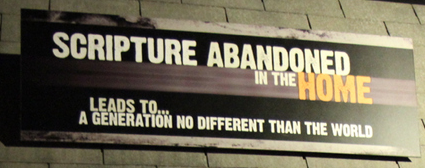Admittedly, it was a terrible idea. I signed up for the race in May because my running partner, Brad, pressured me into signing up. "If you can run 20 miles on back to back days, you can totally do 50."
For some reason, I thought he meant 50K, even though 50 miles is in the name of the race. But, details. Another detail I missed was the part about climbing 8,900ft. There is almost 18,000ft total elevation change over the course of the race, which climbs parts of Crystal Mountain and has views of Mount Rainier. If I had known about that, I might have practiced. My coworker Dawn asked if I was going to run on Friday. "No, I'm tapering," I told her.
"Ah, how long have you been tapering?"
"About 6 months."
Speaking of unprepared, I hadn't realized that we wouldn't have phone service in the shadow of Crystal Mountain. Brad and I planned on Friday to meet at a campground, since I was leaving Seattle later than him. But by the time I got there, at 10:30pm, it was too dark to find him, especially since I had no idea what his car looked like. Also, the campsite was full. The only place to sleep was on the concrete floor of the picnic pavilion. Also, my sleeping bag is currently on its way to Sandusky, Ohio, where I will be camping next weekend for Thistle Nationals. So all I had to sleep on were 2 ponchos. I slept fitfully, and woke at 5am. We had to be at the start line by 6 and my stomach felt like it was in knots.
Thankfully, at the start line I had one bar of service, and was able to get a call from Brad's brother, who also had service. I was so relieved to see Brad. I knew that I couldn't do this race without him. For one thing, he is a constant source of entertainment.
"Let's start at the front of the pack," he said. "That way, only 398 runners will have to pass us."
We didn't though - instead we started at the back of the pack, well behind the elites, as we intended to finish in the bottom 10%, if at all. Brad confided that he hadn't practiced either. Neither of us had run more than 14 miles in the past six months.
The first part of the race is a 15 mile climb that goes up 4,000 feet or so. I didn't even feel them. I was too busy laughing at Brad's hilariously inappropriate stories. I could tell other runners were trying to run closer to us just to hear his stories. At the top of the mountain there were spectacular views. I felt like I was in The Sound of Music with the alpine peaks all around me. The third aid station was right there. Brad and I had a dropbag that we had sent up. He had put an extra pair of shoes and some pitas in his bag. I had added a Four Loko and some extra socks. The Four Loko was more of a joke than anything else - I had mentioned on the way down that I had never tried one, so Tony suggested that I get one at the next gas station, and I did.
Brad and I spread out for a full on picnic at the aid station. We attempted to drink the Four Loko but it was too disgusting to get down. We probably sat there picnicking for 15 minutes. Brad announced that he was dropping out. His calves were cramping up and he couldn't run any further. "You'll do great," he encouraged me. "Just make sure you make it before the last aid stations close down, or you're screwed."
I took off, feeling amazing. I put my headphones in since Brad was no longer there to entertain me. I had a playlist that consisted of only four songs, since I'd forgotten to download music for the run.
I passed everyone who had passed us at the aid station. The pack had thinned out and I was no longer following anyone. Good thing the course was well marked. I got to a part where the trail split, and there was a big arrow pointing the way on the ground. Great. I was running at a good pace now. There was a photographer on the trail. I gave him a thumbs up. About a mile later I saw an aid station. And then I realized - this was the aid station I had just been at. I was running backwards. The volunteers realized it too, as they took down my number. "Uh...you were already here weren't you?"
"Don't worry, you only have to run about 2 miles back that way and you'll find the course."
"Thanks," I said, and took off again. I was crestfallen. This pretty much ruined any chance I had of doing well. Thankfully, the next 15 miles were downhill. I am a great downhill runner. Years of skiing and cycling have strengthened my quads and made me fearless on the downhill. I'm basically a mountain goat. I only face-planted once.
At the next aid station I took my shirt off and threw it away. A volunteer told me that it smelled like a locker room. He dumped a bottle of water over my arms, legs and face to clean the dust off. I pinned my number to my sports bra.
At the next aid station the volunteers all tilted their heads when I arrived. It turns out that I had pinned my number on upside down. Tony was waiting for me at the aid station at the bottom of the mountain. "You are a mess," he told me. "But you're right on track to finishing in 10 or 11 hours."
"I feel great," I said. But actually my stomach was feeling weird. I couldn't eat anything, so I kept running. After what Brad had said, I was afraid of the aid stations closing down before I arrived, and this was starting to feel a bit less like a casual stroll. Unfortunately, the next 10 miles were uphill again, and it was hot by now. The miles between 27 and 37 were by far the hardest. My butt was hurting from so much hill running. Also, my arms were starting to chafe. That is how you know your arms are too fat - when they chafe as you run. Other than the pain, I felt amazing. I usually use my running time to think, but I had outrun the thinking part. I was unable to think about anything useful. In fact, I don't think I was thinking at all.
After the 37 mile point there were six miles of downhill running. I bombed down them, passing lots of people. I wasn't feeling great, but I wasn't feeling awful. I thought about throwing up, but I couldn't. I thought about dropping out, but dropping out isn't allowed after the seventh aid station. Besides, I was so close. Finally, the bottom of the hill was right there. At the last aid station, I took my shoes off and realized that my new socks were completely coated in dust and sweat. I was amazed to not have any blisters however.
Did I mention that I was wearing new shoes? I should have broken them in first. Oh well, they are broken in now. Also, I doubt I will be getting my 30 day money back guarantee after this race.
There were only about seven miles of slightly uphill technical terrain to go. I looked at my phone. It was 5pm. I decided to run 20 minutes and walk 5 for the last bit. I looked at my phone after I thought I had been running for about 20 minutes. It was 5:05. The problem was that my quads were all stiff from sprinting down the hill. I tried skipping to shake them out. Wrong decision. My knee suddenly experienced a shooting pain. I tried jogging on it and realized that there was no way I could run. I had to keep my knee straight just to be able to walk on it. Only five miles to go to the finish, and I was injured. I felt incredibly frustrated. If I hadn't gotten lost I would certainly be finishing by now.
I walked with a weird limp through the rest of the beautiful forest. Lots of old people passed me. But old people had been passing me all day so that was really nothing new. That's the problem with these really tough endurance races - old people are always passing you. I didn't really mind though - my brain was on a different planet. I was euphoric. I really wanted to just stop and lie down. I wanted to cry too. I was happy, but I really wanted to cry. Also, why was there a person watching me from the top of that tree? Oh, it wasn't a person, just a branch. Then I saw another person wearing a black robe. I thought maybe it was a witch. Or a bear. But it was just a root. Almost there. I started singing so that I wouldn't feel my knee anymore.
I managed to make it to the road where the finish was. Somehow I was able to run the last half mile.
And there I was, jogging through the finish after 13 hours of "running." I had been dreaming of putting my legs in the river for about 4 hours. After the finish, Tony helped me down the hill I sat down in the river, still wearing my shorts. It was everything I had dreamed it would be. My sore feet felt all tingly. I wanted to just stay there and sleep, but Tony made me get out. Then he gave me a piggy back ride to the tent where they were giving out t-shirts and socks.
I put on my t-shirt and socks right away. It felt good to be wearing something that didn't smell like a locker room.
And that was it. That was what running a 50 miler feels like. Next time I run a 50 mile race I will practice first. Also, I won't wear new shoes. And I will make a playlist that includes more than four songs.
But whatever - at least it was good exercise.



